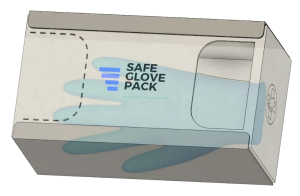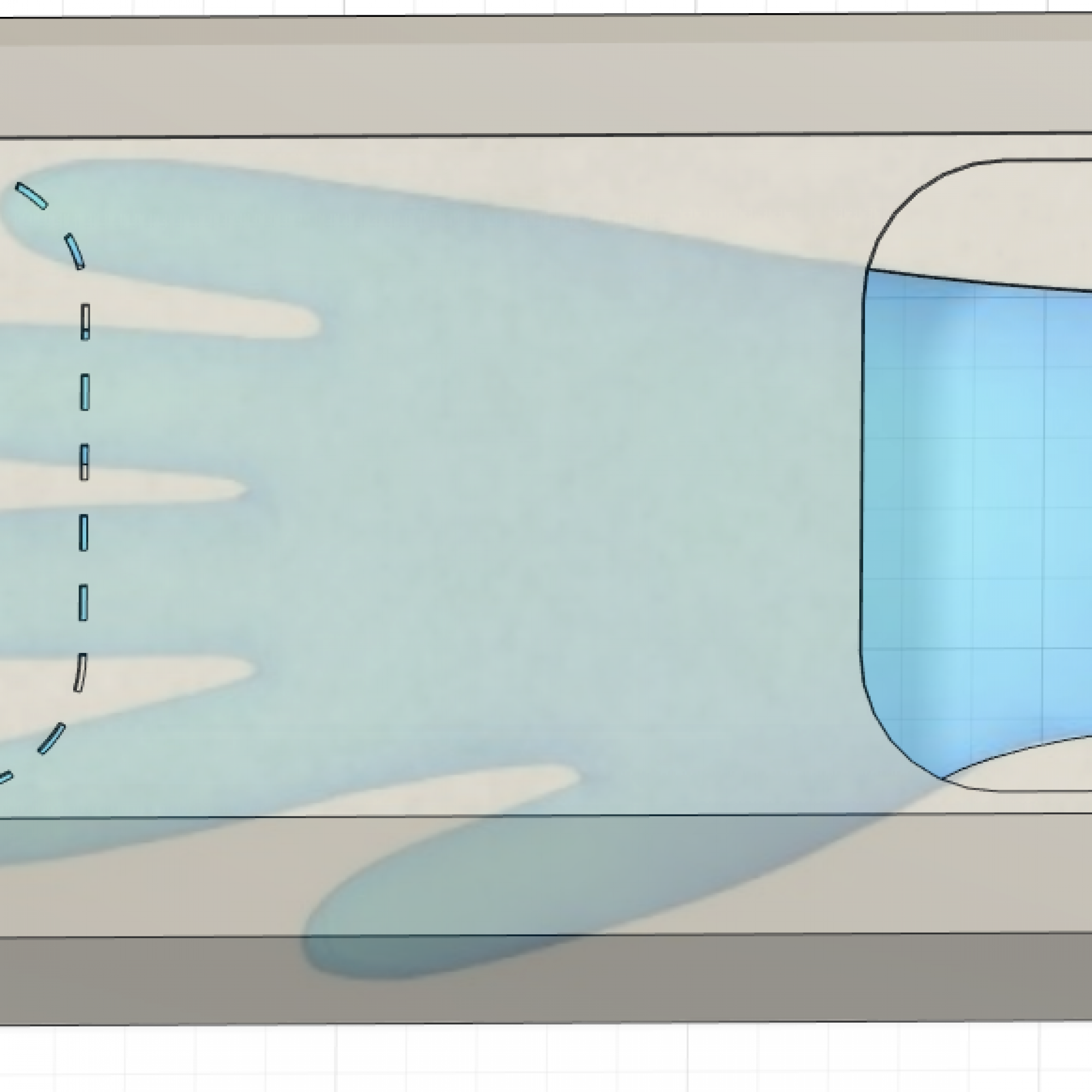About
We present a new, innovative glove box design for non-sterile, single-use medical gloves that allows safe glove removal without touching critical glove surfaces. Our glove box solution reduces the virus and bacteria level on the surface of medical gloves by about 90% (Assadian et al., 2016) and, thus, could save millions of lives.


Our developed boxes have modified openings for glove removal, combined with a stapled arrangement of gloves inside of the package.
- During removal of the gloves out of the dispenser box, gloves are touched at their upper shafts only.
- Critical glove surfaces such as finger tips and palms stay untouched when removing the gloves from the glove box.
- As a result, pathogen transmission is significantly reduced.
Benefits

- 90% reduction of cross-contamination with viruses & bacteria
- Contributing to the mitigation of COVID-19 & other illnesses / pandemics
- Development of complementing disinfecting gloves

- Can be used in existing box holders in healthcare facilities
- Biodegradable packaging
- Usable in health care & the food industry

- Fully compatible with current glove factories & glove packaging procedures
- Effective & cheap:
No extra costs for production! - Worldwide novel, patentable products
More Details
SafeGlovePack is compatible with most of the standardized glove box dispensers. The usage of SafeGlovePack ensures an upgrade for all institutions that use non-sterile gloves:
– Health institutions (hospitals, nursing homes, etc.)
– Chemical laboratories
– Food processing, gastronomy
– Retail
– Private Use
Cross transmission of pathogens (e.g. COVID-19) between patients and/or professional health care workers in hospitals or nursing homes is one of the main problems of current health care systems. A main way of pathogen transmission lies in transmission via hands of health care workers (Wolfensberger et al., 2018; Yan et al., 2019). As stated at the Medical University of Vienna in 2018, hands of health care workers are a main cause (up to 90%) for pathogenic germ transmission (Semmelweis Symposium 2018).
The usage of the common glove boxes leads to a contamination of dispenser boxes and of the outer glove surfaces, thereby leading to non-sterile gloves working as a transmission vehicle in hospitals (Hughes et al, 2013). Even for respiratory virus infections a high virus load can be found on medical equipment, especially on gloves (Phan et al., 2019). Inappropriate glove use can increase the risk of cross transmission via contaminated gloved hands even more (Picheansanthian et. al, 2015).
A box design where the gloves are retrieved at the shaft yields highly reduced contamination of the glove surface by about 90% (Assadian et al., 2016).
Glove factories can easily change to the new enhanced design, the needed modifications to current production processes are minor. The new glove box stays at the same cost of production and transportation as currently needed for state-of-the-art boxes.
Nitrile, latex and also vinyl gloves work very well with this system. The packing dimensions of the dispenser boxes stay the same, only the dispenser openings on top of the package are changed from the centre to the outer borders.
Each box contains typically 100-200 gloves – the first 50-100 gloves are placed in a stapled stack in the box using the standard method. Afterwards the additional 50-100 gloves are turned by 180° and placed on top of the first stack. Hereby, our modified box fits the same number of gloves as the commercially available glove boxes.
There is a need for better control of epidemics and pandemics such as SARS-COV2 as well as other common nosocomial infections. The use of Safe Glove Packs can reduce spreading infections, thereby reducing the overload of current health systems and providing relief for global economies.
We are looking for investors & partners who want to become part of the health revolution as well as health care facilities interested in introducing the new glove box design!
Click here to contact us!
Our Partners
Literature
- Assadian, O., et al. (2016). “Can the design of glove dispensing boxes influence glove contamination?” J Hosp Infect 94(3): 259-262.
- Wolfensberger, A., et al. (2018). “Transfer of pathogens to and from patients, healthcare providers, and medical devices during care activity-a systematic review and meta-analysis.” Infect Control Hosp Epidemiol 39(9): 1093-1107.
- Picheansanthian, W. and J. Chotibang (2015). “Glove utilization in the prevention of cross transmission: a systematic review.” JBI Database System Rev Implement Rep 13(4): 188-230.
- Hughes, K. A., et al. (2013). “Bacterial contamination of unused, disposable non-sterile gloves on a hospital orthopaedic ward.” Australas Med J 6(6): 331-338.
- Phan, L. T., et al. (2019). “Respiratory viruses on personal protective equipment and bodies of healthcare workers.” Infect Control Hosp Epidemiol 40(12): 1356-1360.
- Jain, S., et al. (2019). “Modified glove use for contact precautions: Health care workers’ perceptions and acceptance.” Am J Infect Control 47(8): 938-944.
- Yan, Z., et al. (2019). “Prospective investigation of carbapenem-resistant Klebsiella pneumonia transmission among the staff, environment and patients in five major intensive care units, Beijing.” J Hosp Infect 101(2): 150-157.
- Vikke, H. S., et al. (2019). “Compliance with hand hygiene in emergency medical services: an international observational study.” Emerg Med J 36(3): 171-175.
- Lotfinejad, N., et al. (2020). “Hand hygiene and the novel coronavirus pandemic: The role of healthcare workers.” J Hosp Infect.
- Medical University of Vienna (2018). Semmelweis Symposium, July 2018.


